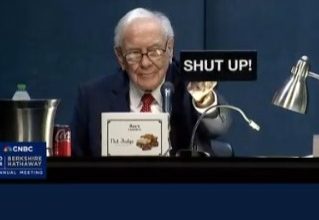If equity looks hopeless, here is how to park money elsewhere

Investors are in a tight spot, failing to decide whether to opt for traditional investments like bank fixed deposit and gold or stay put with equities as the near- to medium-term outlook for domestic equities looks weak.
Domestic equity indices have witnessed significant correction in recent weeks amid deteriorating macroeconomic factors, such as soaring crude oil prices, a falling rupee, spike in US bond yields and unabated outflow of overseas portfolio money.
Some analysts say almost half the market participants have gone out of the market after the recent turmoil. Equity benchmarks Sensex and Nifty have corrected nearly 11 per cent between August 31 and October 12.
“Over the past one-and-a-half month, the Indian market has scared away half of its participants. Open interests in Bank Nifty and Nifty have reduced by 40 per cent from their peak levels seen in July-August,” said Jimeet Modi, founder and CEO, SAMCO Securities and StockNote.
Some financial advisers are already suggesting investors to look beyond equities this year.
Gold looks very attractive this year and we expect the yellow metal to test the $1,350 level in six to eight months, said Kunal Shah, Head of Commodity at Nirmal Bang Commodities. The precious metal traded at $1,221 on Monday.
The US market has been rising for last six months following the corporate tax cuts and thanks to strong GDP growth, but the pace of that rise is likely to slow down in the near term.
US public and private sector debt is estimated to be more than $70 trillion, and above that, the Federal Reserve has already started raising interest rates, which is expected to rattle emerging markets, emerging market currencies and finally the US market, Shah said.
He said there is record short position in bullions on CME and investment demand for gold is likely to shoot up in the days ahead. “This is why it is time for gold,” Shah said. He said in India, gold should move towards Rs 35,000 in the coming months. On Monday, the India price stood at Rs 32,000, up over 9 per cent from Rs 29,358 per 10 gm on January 1.
Among other commodities, Vandana Bharti, Assistant Vice-president of commodity research at SMC Comtrade, sees potential in crude oil and copper. Crude oil prices have increased over 35 per cent so far this year, while copper has remained almost flat in rupee terms.
She believes crude oil should revive owing to Iran sanctions and the next resistance for the commodity should come at Rs 5,450-5,500. In the industrial metals space, she likes copper with a target price of Rs 465 a kg. “A drop in LME inventories, a technical bounceback and a weaker dollar index should support copper,” she said.
For those trying to zero in on options in debt market, Lakshmi Iyer, CIO for Fixed Income and Head of Products at Kotak Mutual Fund, suggests investors should not exit in panic, as there is more noise than news in the market. She advised investors to maintain their investment horizon.
In the current market, fixed maturity plans (FMPs) and ultra-short or low duration funds look good, considering the market conditions, she said.
Boiling crude oil prices and weak macro triggers have led to a surge in bond yields by over 60 basis points and the 10-year benchmark now trades around 7.98 per cent. Investing in debt funds can be rewarding when yields are high.
Corporate fixed deposit schemes are drawing a lot of attention, but investors are also wary of these schemes amid the fear of liquidity crunch in the NBFC sector. Companies such as M&M Financial Services, Shriram City Union Finance, Shriram Transport Finance, DHFL and PNB Housing Finance are offering up to 8.70 per cent return for investment tenures of three years.
Company deposits are issued mainly by NBFCs and manufacturing firms to raises funds. These deposits are basically unsecured loans, that do not guarantee anything to the investor in case of a default. It is because of this risk that such schemes come with higher interest rates compared with bank FDs. Financial advisers suggest utmost precaution on this instrument, and one should check the issuing company’s financial and issue ratings before putting money in it.
However, not everyone is ready to give up on equity yet.
Equity as an asset class is known for changing cycles in every 2-3 years. Despite the painful correction, some analysts still see equity as the best asset class and advises investors to add stocks at low prices considering the favourable risk-reward ratio.
There are expectations that a falling rupee may provide a silver lining and with crude prices close to levels from where the upside looks limited, equities should bounce once crude oil prices start moving southwards.
Investors should stick to their asset allocation and stay put in your investments. The risk-reward is very favourable for investing in current equity market. India will continue to grow at 7-8 per cent and equity is the only asset class that can best inflation in the long run, said Lav Kumar, Head of Products and Business Development at LIC Mutual Fund.
Raghvendra Nath, MD at Ladderup Wealth Management said, “As long as one is invested in high quality stocks or portfolios, one should not worry about the long-term prospects of their investments. If you under-own equities, then you should add more to your portfolio now.”
Ridham Desai, Managing Director, Morgan Stanley India, strongly believes this is the time to buy stocks in the Indian market.
“At this point, there is an opportunity in the market and it is really not the time to be defensive about portfolios,” he said in an interview with ETNow.





